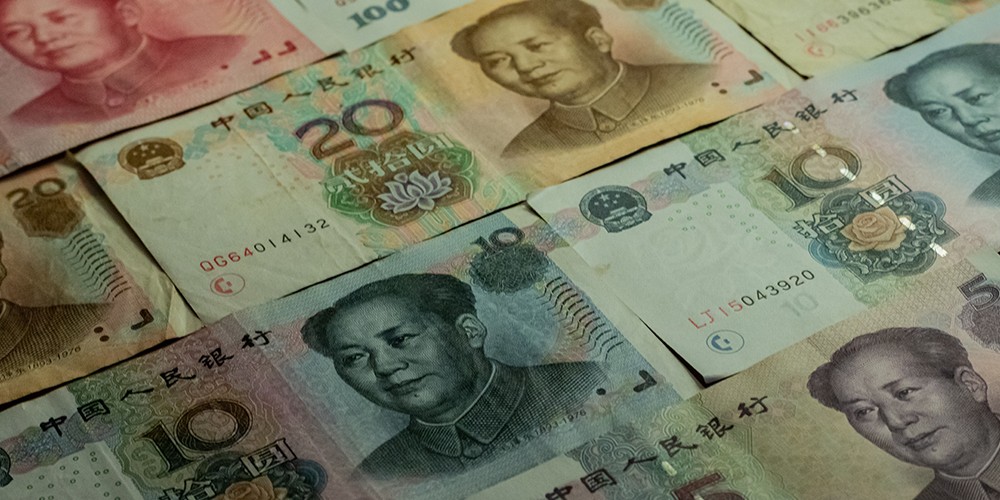Access to China’s bond market has improved in recent years as Beijing has taken steps to liberalise the country’s financial system. In September, China’s securities regulator announced plans to combine the Qualified Foreign Institutional Investor and Renminbi Qualified Foreign Institutional Investor programmes. This move will simplify rules and application processes, and enable foreign institutions to conduct repo transactions and have access to derivatives.
The Chinese market has been maturing, which should provide some comfort for investors. For example, the seven-day repo rate has been historically volatile, with swings of 600-800 basis points within weeks in 2011 and 2013. Such occurrences have since become much less frequent, with spikes occurring generally during the year-end cross.
There has been much literature on the return benefits of diversifying into Chinese government bonds. The hedging properties that these bonds offer are just as important. US Treasuries, for instance, are often used to hedge risk.
On a longer-term horizon (10 years), the weekly correlation in 10-year yields is moderately high, at 0.65. During periods of stress (looking at the 2008 financial crisis and the pandemic), 10-year Chinese government bonds behaved like a safe asset would, providing capital gains to offset losses on riskier products (equities and credit). The 2008 crisis and Covid-19 were global shocks with a sizable impact on the macroeconomy and markets. Viewed from this angle, Chinese government bonds could be (without looking at foreign exchange performance) a viable hedging tool.
In practical terms, few government bond markets offer a combination of safety, size, liquidity and returns. Typically, a global investor will spread bets across US, European and Japanese debt. But these traditional markets are no longer as attractive, and investors are turning increasingly to Chinese government bonds.
Real and absolute yields are depressed in the G3 economies, pointing to muted if not negative returns ahead. Ten-year Japanese government bond yields are close to zero while 10-year German yields are closer to -0.5%. The US fares better at 0.7%. Comparatively, Chinese yields are just over 3%. Assuming that trend inflation for the US and China are similar, at around 1.5% for the longer term, this translates into a real yield gap of 240 basis points in favour of Chinese bonds.
Moreover, with yields so low, G3 government bonds will no longer fare well as risk hedges. These bonds’ performance through the pandemic is telling. Germany and Japan entered the crisis with 10-year yields at -0.19% and -0.01%, respectively (according to numbers from end-2019). By end-March, German yields were down 28 basis points while Japanese yields climbed three basis points. Comparatively, the US saw 10-year yields plunge 125 basis points over the same period, making use of more monetary policy space to adjust to this shock. However, the US’ yield adjustment in this crisis is lower than during the previous two financial upsets – the 2000 dotcom and the 2008 financial crisis. While not performing as well as Treasuries, Chinese government bonds still offered better protection than German Bunds at the height of the Covid-19 crisis in March.
At the point of writing, 10-year yields stood at 0.70%, 0.02% and -0.53% for the US, Japan and Europe respectively. There is little or no room for German or Japanese yields to head lower in the event of another crisis. Ten-year US yields could drop by 70 basis points (maybe more if the Federal Reserve embraces negative rates). This situation provides scant comfort for investors looking for effective hedges. Theoretically, levered trades on Treasuries could replicate the diminished space for yield declines. However, these hedges could go the other way when yields are too low.
Alternatives are needed and Chinese government bonds have a role to play. Global investors are generally still under-invested in these bonds. To be sure, foreign ownership of Chinese assets (bonds and equities) has risen sharply. Foreign institutional ownership of Chinese government bonds has grown to around 9% of outstanding shares from almost 4% in 2017. Interest in development bank bonds has also picked up.
Yet there is still a lot of room to go. For example, foreign ownership of Treasuries stands at 35%. In terms of reserves allocation, there has not been a meaningful shift to Chinese assets just yet. The International Monetary Fund’s currency composition of foreign exchange reserves data show that the amount of renminbi claims (from allocated reserves) climbed by $18bn in the 12 months to Q2 2020, compared with a $19bn increase in euro reserves. Total allocated reserves in renminbi are still below those in sterling and yen.
In short, while gaining popularity, Chinese government bonds still feel like a niche trade. Their returns prospects and hedging qualities may not yet be fully appreciated, despite the addition of China bonds to the World Government Bond Index. We expect foreign investors to allocate more to Chinese government bonds over the coming years, driving foreign ownership towards 20% of outstanding shares.
Eugene Leow is Rates Strategist – G3 & Asia, Duncan Tan is Foreign Exchange and Rates Strategist – Asean, Chang Wei Liang is Credit and Foreign Exchange Strategist, and Nathan Chow is Senior Economist and Strategist at DBS Bank. This is an edited version of an article originally published by DBS Bank.
